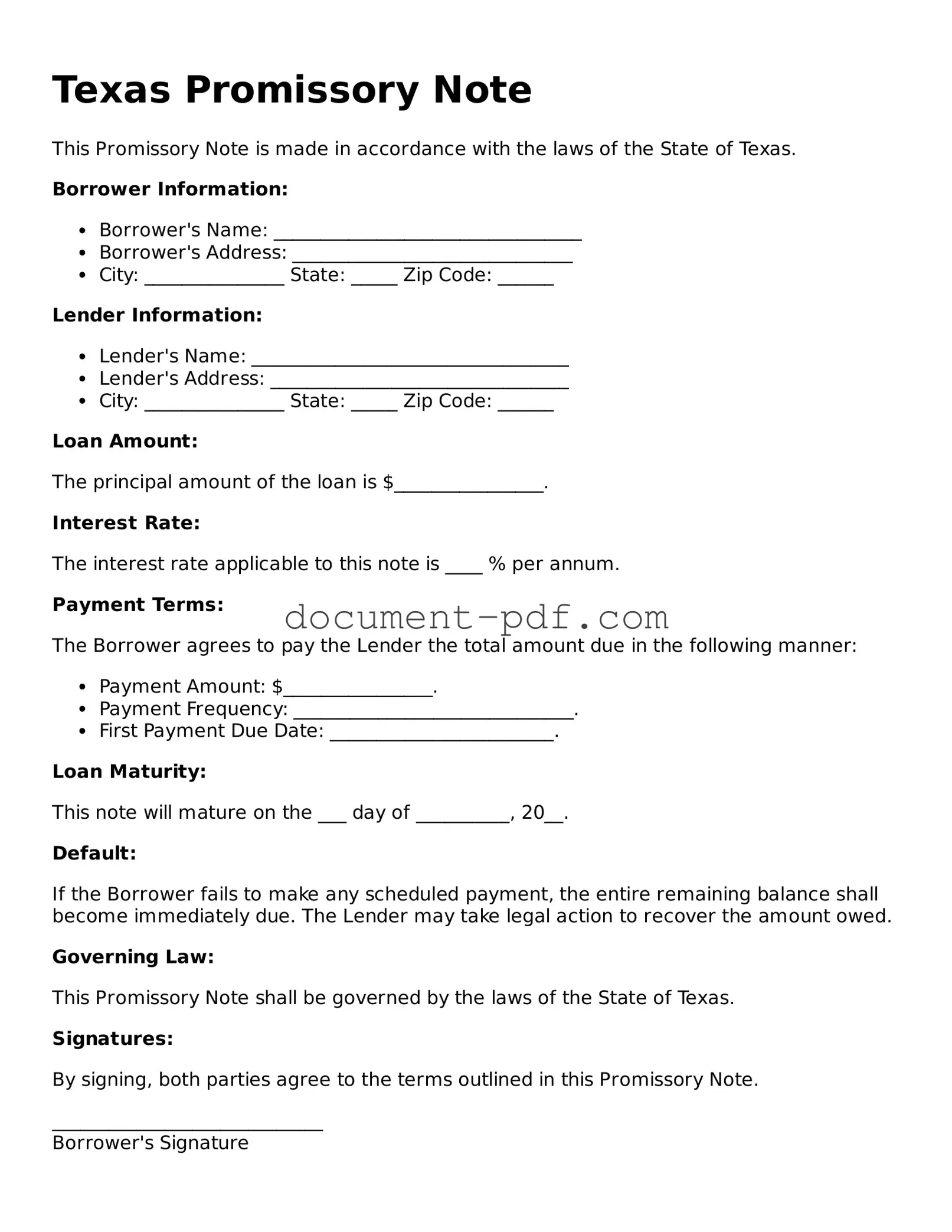The Texas Promissory Note is similar to a personal loan agreement. Both documents outline the terms under which money is borrowed and specify the repayment schedule. A personal loan agreement typically includes details such as the loan amount, interest rate, and any collateral involved. This ensures that both the lender and borrower have a clear understanding of their obligations, similar to the clarity provided in a promissory note.
A mortgage agreement shares similarities with a promissory note, particularly in the context of secured loans. In a mortgage, the borrower agrees to repay a loan used to purchase real estate, while the property serves as collateral. Like a promissory note, the mortgage details the repayment terms and conditions. However, the mortgage also includes provisions for what happens if the borrower defaults, adding an extra layer of security for the lender.
A car loan agreement is another document that resembles a promissory note. When someone finances a vehicle, they sign a car loan agreement that outlines the loan amount, interest rate, and repayment terms. This agreement also serves as a promise to pay back the borrowed money, similar to a promissory note. Both documents create a legal obligation for the borrower to repay the loan within a specified timeframe.
An installment sale agreement is akin to a promissory note in that it involves the purchase of an item with a payment plan. In this agreement, the buyer agrees to pay for the item over time while receiving possession of it immediately. The terms, including payment amounts and due dates, are clearly outlined, much like in a promissory note. Both documents establish a mutual understanding between the buyer and seller regarding payment obligations.
A business loan agreement is similar to a promissory note in that it formalizes the borrowing process for business purposes. This type of agreement details the amount borrowed, the interest rate, and the repayment schedule. Like a promissory note, it serves as a written promise to repay the loan. Both documents are essential for maintaining clear expectations between the lender and the business borrower.
A credit card agreement can also be likened to a promissory note. When someone uses a credit card, they are essentially borrowing money from the credit card issuer. The agreement specifies the terms of repayment, including interest rates and payment due dates. Like a promissory note, it establishes a legal obligation for the cardholder to repay the borrowed funds within the agreed timeframe.
A student loan agreement shares characteristics with a promissory note, particularly regarding the terms of repayment. When students borrow money to pay for their education, they sign an agreement that outlines the loan amount, interest rate, and repayment schedule. This document serves as a formal promise to repay the loan, similar to the function of a promissory note, ensuring that both parties understand their responsibilities.
A Hold Harmless Agreement is a vital document in various transactions, ensuring that one party is not held liable for any unforeseen circumstances that may arise. This legal instrument is essential for enabling parties involved to clarify their roles and responsibilities, while also understanding the associated risks. For those interested in downloading or filling out such agreements, resources such as Texas PDF Templates offer convenient access to customizable forms.
Finally, a debt settlement agreement can be compared to a promissory note in the context of resolving outstanding debts. This document outlines the terms under which a debtor agrees to pay a reduced amount to settle their debt. While it differs in purpose, it still creates a binding agreement between the debtor and creditor, similar to how a promissory note establishes a repayment obligation.
